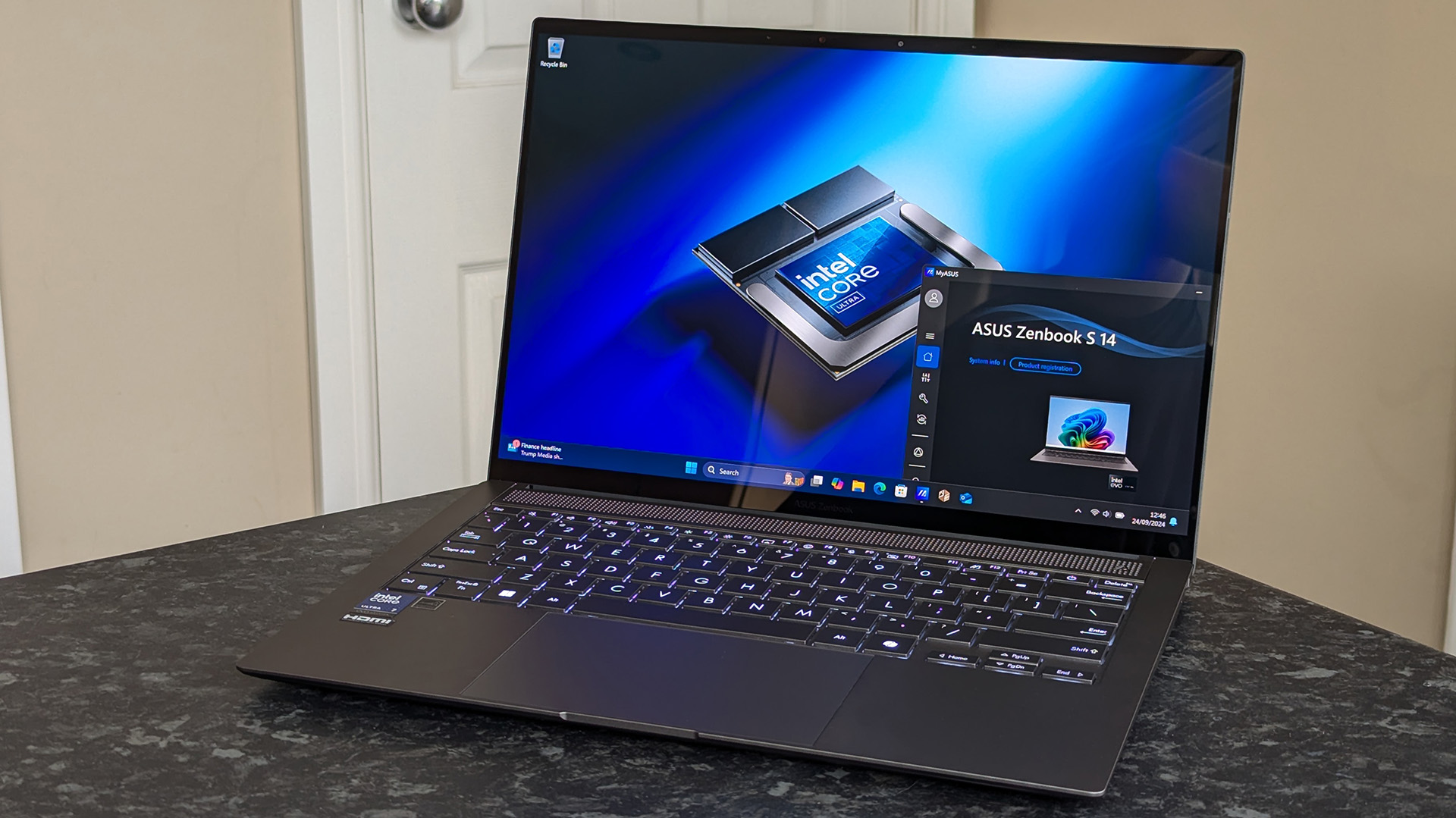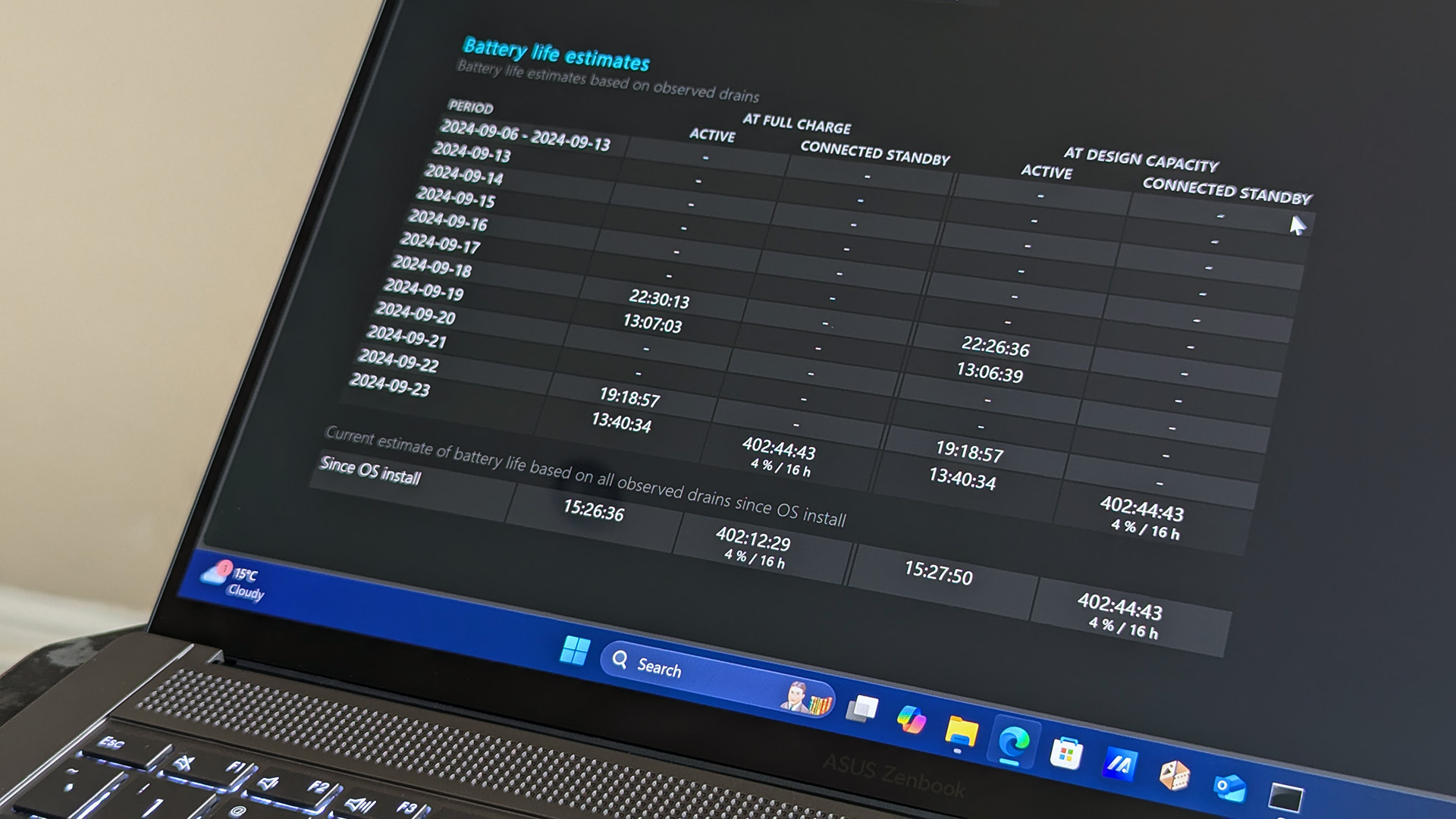Early Verdict
While I've only had a few days to experiment and tinker with the Core Ultra 7 258V processor from Intel's long-awaited Series 2 mobile processors, the initial reactions are fantastic overall. Dropping core count and power draw means it ranks below some aggressive competitors, but it keeps up with more powerful chips from previous generations and offers benefits in other areas. It's an extremely powerful retort to Qualcomm's Snapdragon X efficiency, and x86-64 supports all apps — more to come as my review expands.
Pros
- +
Up to 20 hours of battery life
- +
Gorgeous chassis and form factor
- +
x86-64 platform supports everything
Cons
- -
Raw multi-core performance is below its most threatening rivals
Why you can trust Windows Central
Intel's Lunar Lake processors are finally here, as its mobile chips move from the temporary codename to an official 'Core Ultra Series 2' branding.
My first chance to experience the promised performance-per-watt breakthroughs hands-on is with ASUS' new Zenbook S 14 laptop, a compact variant of the Zenbook S 16 I already praised.
At least, that's how it would be if I hadn't come down with what feels like the human equivalent of the Crowdstrike bug the day after the Zenbook arrived.
I ran synthetic benchmarks on the cutting-edge Core Ultra 7 258V processor between bouts of feverish rest while my brain and body (still) recovered from whatever made it past my biological antivirus.
For now, I'm focusing on the performance of Intel's new mobile chip and the overall battery life provided by ASUS' stylish 14-inch notebook. Add this hands-on article to your bookmarks, and you'll see it transformed into a full review in the coming days once I've had more time to gauge all of its features.
This article is a work-in-progress review, and I won't assign a product score until it is completed. Intel and ASUS provided a sample unit but did not see any content before publishing.
Zenbook S 14: Price, availability, and specs
ASUS sells three variants of its new Zenbook S 14 with Intel Core Ultra (Series 2) processors at Best Buy, starting from $949.99. Customers with an active My Best Buy membership could benefit from extra purchase or delivery options, so always check before ordering.
Price: $1,399 at Best Buy
CPU: Intel Core Ultra 7 258V
RAM: 32GB LPDDR5
GPU: Intel Arc 140V
Storage: 512GB NVMe SSD
OS: Windows 11 Home (64-bit)
Camera: FHD with Windows Hello
Display: 14-inch 16:10 OLED 3K (2880x1800) 120Hz touchscreen
Ports: 2x Thunderbolt 4 USB-C, 1x USB-A 3.2 Gen 2, HDMI, combo audio
Connectivity: Wi-Fi 7, Bluetooth 5.4
Battery: 72Wh
Charger: 65W USB-C
Dimensions: 12.22" x 8.45" x 0.47" ~ 0.51"
Weight: 2.65lbs (1.20kg)
The most affordable Zenbook S 14 variant, priced at $949.99, comes in 'Neutral Black' and features a Core Ultra 5 (Series 2) processor with 16GB of RAM and 512GB of storage. Its OLED screen has a maximum resolution of 1920 x 1200.
All the latest news, reviews, and guides for Windows and Xbox diehards.
Second at $1,399, and matching the "Zumaia Gray" color of my sample unit, has a Core Ultra 7 (Series 2) processor, the same 16GB of RAM, double storage space with a 1TB solid-state drive, and its OLED screen uses a higher 2880 x 1800 resolution.
Finally, and currently sold out at the time of writing, the high-end $1,499 model comes in "Scandinavian White" with a Core Ultra 7 (Series 2) processor, 32GB of RAM, and 1TB of storage.
It's extremely early as ASUS celebrates its launch day of the Zenbook S 14, and availability will undoubtedly expand quickly. As I develop this article into a full review, I'll update this space with any extra retailers, model variants, and price changes.
Zenbook S 14: Benchmark results


The codenamed "Lunar Lake" Core Ultra 7 258V processor inside ASUS' new Zenbook S 14 laptop houses an 8-core CPU, 32GB of LPDDR5X memory-on-package, an NPU rated at 47 peak TOPS, and an integrated Intel Arc GPU 140V tile that supports hardware-based ray tracing for improved lighting in gaming and other 3D applications rendering in realtime. All of these parts combine on the SoC (System on Chip) with the help of TSMC's 3nm process tech at a low TDP (Thermal Design Power) of only 17W, as Intel targets a 50% reduction in power consumption from its previous-gen "Metor Lake" Core Ultra chips.
With all this in mind, it's easier to understand the Zenbook S 14's results in various CPU-centric benchmarks. Intel suggests "testing against other laptops with processors that operate at the 25-30W range," explicitly naming its fantastic previous-gen Core Ultra 7 155H chip as a comparable system. That notion alone is interesting, considering the 16-core Ultra 7 155H features 22 threads, a larger 24MB Smart Cache (12MB in the 258V,) and, crucially, a higher 28W base TDP. Yet, the 155H still matches or falls slightly behind the new Core Ultra 258V in devices like Lenovo's ThinkPad X1 Carbon (Gen 12) during sustained stress in Cinebench 2024.
Putting up your dukes against Qualcomm's 12-core Snapdragon X Elite X1E-80-100 chip is a little more ambitious, especially when the slightly underclocked X1E-78-100 found in Lenovo's Yoga Slim 7x (Gen 9) flies so much farther ahead in multi-core performance. However, Intel creeps ahead in single-core testing, which isn't uncommon in processors with fewer physical cores and, in turn, less division in power.
Perhaps I can make a more interesting comparison against the new 8-core Snapdragon X Plus X1P42100, an ARM-based chip that I recently became well-acquainted with while testing ASUS' own 2-in-1 ProArt PZ13.
Qualcomm's chip is, at this point, extremely similar in specification, though it's built using TSMC's 4mn process and, naturally, only works with Windows on Arm devices. While emulation via Prism and native ARM-based app support has improved significantly, it's hard to deny the killer appeal of a comparable x86-64 chip from Intel, especially if it can compete with the phenomenal battery life metrics delivered by the Snapdragon X platform. Spoiler: it can. Find out soon.
For in-house results, my review of ASUS' Zenbook S 16 shows how much of a generational leap AMD made with its Ryzen AI 300 processors, not only in multi-core performance, where the Ryzen AI 9 HX 370 scores higher here (in a larger 16-inch chassis with more space for active cooling) but also as a new single-core champion. However, AMD's Radeon 890M iGPU still ranked below last-gen Intel Arc graphics found in devices like Lenovo's Slim 7i (Gen 9), and Intel pulls further ahead with its new Arc 140V in the Zenbook S 14.
So, what does this all mean at a glance?
Essentially, Intel's first Core Ultra Series 2 mobile processors in the Lunar Lake-V range offer lower overall power consumption but comparable CPU performance to its more power-hungry Meteor Lake-H chips. It does this while trumping AMD's Ryzen AI in the graphics benchmark division and matching or coming close enough to Qualcomm's Snapdragon X platform regarding battery life, so it's easy to see why Intel's x86-64 offerings could remain the top dog for thin and light laptops, stealing some thunder from ARM64.
Zenbook S 14: Battery life
Cutting right to the chase: Yes, the "up to 20 hours of battery life" claim is entirely legitimate. I kept the Zenbook S 14 on the 'Balanced' power plan, as it comes out of the box, and left the brightness around a comfortable 40%, which feels like 150 nits, based on my history of testing laptops, but I'll confirm an exact amount later. Running various battery life benchmark tests in PCMark 10 and performing my own by leaving a 24-hour 4K video streaming via YouTube, a Windows battery report estimates 15 hours and 26 minutes "based on all observed drains since OS install."
Earlier this year, I flew to Taipei before Computex to see what Intel was willing to share about its upcoming mobile processors, and extended battery life was one of many promises that persisted throughout its following launch appearances at IFA Berlin. During a keynote speech at Intel's Tech Tour, Arik Gihon, the company's CPU SoC Architect Lead, proudly exclaimed, "Lunar Lake reduces the SoC power by up to 40%. This is a major step for mobile, and you WILL notice it." He was right.
To be clear, I expected to see an impressive number as Intel had set its sights on achieving significant leaps in power efficiency, but seeing the Core Ultra 7 258V match and even surpass the multi-day lifespan of Qualcomm's Snapdragon X Elite chips is incredible.
Of course, these estimates are based purely on synthetic benchmark results, but other laptops and SoC processors undertake the same experience. I don't expect the "real-world" value to differ by more than a few hours, and I'll continue to use the Zenbook S 14 throughout the week to expand this review, so we'll see where the estimate is by then.
Zenbook S 14: Further testing
There are more tests to run that will further help to analyze and rank Intel's new Core Ultra 7 258V mobile processor alongside its modern rivals. Still, they'll come alongside a wealth of deeper dives into ASUS' applications of its fantastic Zenbook design in a 14-inch form factor. So far, I don't have any complaints about the Zenbook S 14, and it's only cementing my opinion that it's the perfect size for traveling.
I'll be testing the OLED screen and the solid-state storage drive inside and going deeper into graphics performance with some in-game benchmarking tools and more purpose-built synthetic benchmarks in 3DMark. Naturally, it will all round out into an overall opinion on whether it's worth spending your cash on this "Ceraluminum" beauty, but the chances seem relatively high. As an introduction to Intel's long-awaited Lunar Lake chips, the Zenbook S 14 has been a dream, but it's also making a strong impression on me as a generally gorgeous Windows laptop.
So far, the trade-off of fewer cores and a focus on power efficiency has undoubtedly dropped the mid-range Core Ultra 7 258V below its expected competitors, at least in raw multi-core performance tests. Still, the gains in battery life and integrated graphics could be an argument towards the Zenbook S 14's ~$1,000+ MSRP being worth it. Stay tuned for more — I'll be eating fistfuls of lozenges and running more benchmarks for now.

Ben is a Senior Editor at Windows Central, covering everything related to technology hardware and software. He regularly goes hands-on with the latest Windows laptops, components inside custom gaming desktops, and any accessory compatible with PC and Xbox. His lifelong obsession with dismantling gadgets to see how they work led him to pursue a career in tech-centric journalism after a decade of experience in electronics retail and tech support.








